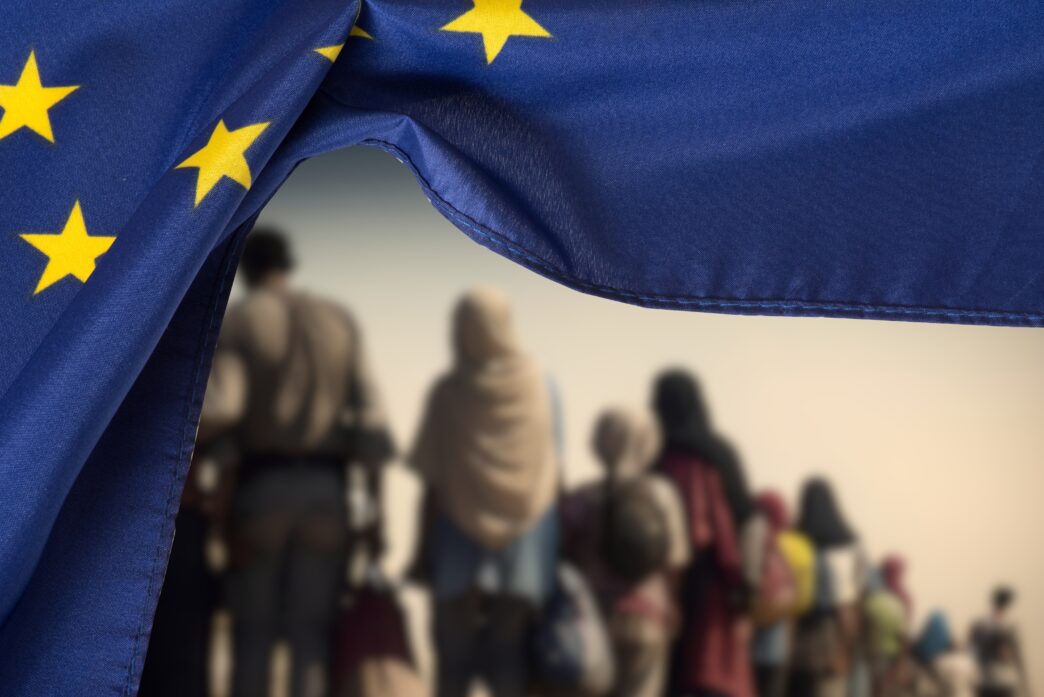Executive Summary
The Story So Far
Why This Matters
Who Thinks What?
A decade after the Syrian civil war and other global instabilities triggered an unprecedented influx of migrants, migration remains a central and often contentious issue dominating political debates across Europe. In 2015, over a million individuals sought safety and opportunity on the continent, marking the largest movement of people since World War II and challenging Europe’s political and social cohesion.
A Decade of Shifting Dynamics
The initial optimism, encapsulated by former German Chancellor Angela Merkel’s “Wir schaffen das” (“We can do it”), quickly gave way to deep divisions. The sudden surge in arrivals strained asylum systems, ignited culture wars, and significantly fueled the rise of populist movements across Europe, with far-right parties nearly doubling their representation in governments over the last two election cycles.
Since then, rising security concerns, economic uncertainty, and profound political polarization have hardened attitudes. Governments that once embraced migrants have increasingly implemented stricter measures, including fences, intensified border patrols, and offshore agreements to limit new arrivals.
Key Migration Routes
Historically, migration to Europe has followed several established routes. Three primary pathways lead into the Mediterranean: the Western route through Ceuta, Melilla, and mainland Spain; the Central route to Italy and Malta; and the Eastern route via Cyprus, Greece, and Bulgaria.
Other significant routes bypass the Mediterranean, including the Atlantic route to Spain’s Canary Islands and the Western Balkan route, traversing North Macedonia, Montenegro, and Serbia. The Eastern Borders route, a 6,000 km stretch along the EU’s eastern flank, remains the least utilized.
In 2015, the Eastern Mediterranean and Western Balkan routes accounted for 90% of all irregular border crossings, primarily driven by Syrians, Afghans, and Iraqis. The Central Mediterranean route, despite its dangers, has consistently been a key entry point, representing 38% of crossings between January and September of the current year, with the Eastern Mediterranean route accounting for 28%.
The national composition of migrants has also evolved, with Bangladeshis, Egyptians, and Afghans now comprising the majority of border crossings, reflecting changing migration drivers and regional conflicts.
Fluctuating Numbers
Irregular border crossings and asylum applications present parallel but distinct narratives. Europe recorded a peak of 1.8 million irregular crossings in 2015. Following EU border closures and the COVID-19 pandemic, these numbers declined before rising again to 380,000 by 2023.
While the full year is not yet complete, the familiar seasonal pattern persists, with migration typically peaking during warmer months. As of September, 133,000 crossings were logged, representing a 20% decrease compared to the first half of 2024.
Asylum applications followed a similar trajectory, peaking at 1.3 million in 2015-2016 and dropping below half a million during the 2020 pandemic. By 2023, applications reached levels not seen since the peak of the crisis. The first half of 2025 saw approximately 399,000 applications in the EU+ (EU27, Norway, Switzerland), a 23% decrease from 2024 and 7% lower than the same period in 2015.
The demographics of those granted protection status have also shifted. In 2015, Syrians accounted for 50%, Eritreans 8%, and Iraqis 7%. By mid-2025, Afghans represented 20%, Venezuelans 19%, and Somalis 5%. Germany, once the primary destination for Syrians, has experienced a 40% drop in applications, now surpassed by France and Spain.
Conflict as a Catalyst
Europe’s migration flows over the past decade were largely driven by the Syrian Civil War, which saw half a million Syrians arrive in Europe by 2015. However, the sudden fall of Damascus to the militant group Hay’at Tahrir al-Sham (HTS) in December 2024 has reportedly reversed this trend, with fewer Syrians filing asylum applications in hopes of returning home.
Some European countries are already adjusting their policies concerning Syrian refugees. The article states that the current German Chancellor, Friedrich Merz, has indicated that Syrians no longer qualify for asylum and that Berlin will encourage citizens to return home to assist in rebuilding their country. Other European nations are reportedly preparing to adopt similar policies.
Despite these developments, Syrians and Afghans, particularly Afghan women, who the Court of Justice of the European Union recognized as a persecuted group under the Taliban in October 2024, continue to exhibit high protection rates.
Political Imperatives and Future Challenges
Despite a recent decline in overall numbers, migration continues to be a dominant force in European politics. Recent elections across the continent have frequently reignited calls for tougher border controls and accelerated deportations.
The European Union Agency for Asylum (EUAA) cautions that current figures may indicate only a temporary easing of pressure on asylum systems, rather than a long-term trend. Significant backlogs in processing asylum cases persist, and shifts in migration routes could rapidly reverse any downward movement.
With the New Pact on Migration and Asylum scheduled to take effect in mid-2026, the EU faces the ongoing challenge of balancing deterrence and protection while maintaining alignment among its 27 member states.








